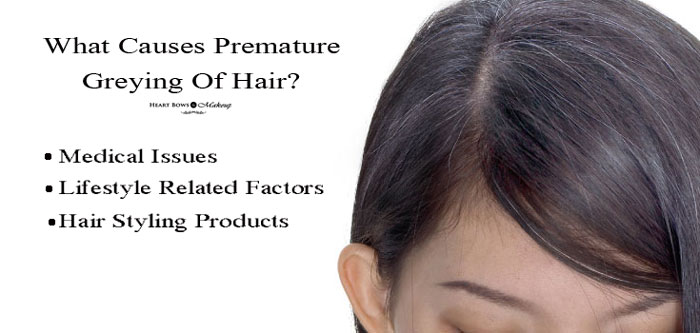Gray hair is caused by a reduction of pigment while white hair has no pigment at all

Gray Hair vs. White Hair: Understanding the Difference


When it comes to hair, we often find ourselves fascinated by the different colors we can sport. From luscious black to vibrant red, and even the elusive gray and white, our hair color can say a lot about us. As we age, it is common to notice the appearance of gray or white hair, but have you ever wondered what causes these changes?
Gray Hair: A Reduction of Pigment
Gray hair is the intermediate stage between the original color and fully white hair. It occurs when there is a reduction in the pigment responsible for hair color, known as melanin. The hair follicles gradually produce less melanin, resulting in a change in hair color from its original shade to a mix of pigmented and unpigmented strands. Thus, the appearance of gray hair is a result of having less melanin in the hair follicles.
Several factors contribute to the reduction of melanin, including genetic factors, age, stress, and even medical conditions. Research suggests that genetics play a significant role in determining the timing and extent of graying hair. Additionally, as we age, the natural production of melanin tends to decrease, leading to the gradual appearance of gray hair over time.
It’s important to note that gray hair is a natural part of the aging process and is not necessarily a cause for concern. Embracing gray hair has become increasingly popular, as many individuals view it as a sign of wisdom and experience. However, for those who prefer to maintain their natural hair color, various cosmetic products and hair dyes are available in the market to help cover up the grays.
White Hair: The Absence of Pigment

While gray hair gets its color from a reduced amount of melanin, white hair, on the other hand, lacks any pigment. White hair occurs when the melanin production completely ceases, resulting in a transparent hair strand that reflects light instead of absorbing it. The absence of melanin gives white hair its distinct color.
The transition from gray to white hair is not uniform and can vary among individuals. Some may experience a gradual progression from gray to white, while others may notice sudden patches of white hair. The onset of white hair can also be influenced by genetics, lifestyle choices, and certain medical conditions.
It’s worth mentioning that having white hair at a young age, known as premature graying, can be a cause for concern for some individuals. While genetics still play a role in premature graying, other factors such as stress, smoking, and certain medical conditions may contribute to the early loss of melanin production.
In conclusion, understanding the difference between gray hair and white hair can help us appreciate the intricacies of our hair’s natural aging process. Gray hair results from a reduction in melanin production, while white hair occurs when melanin production ceases entirely. Embracing our natural hair color, whether it’s gray, white, or any other shade, allows us to celebrate our unique journey through life.
Sources:
Tags
Share
Related Posts
Quick Links
Legal Stuff

